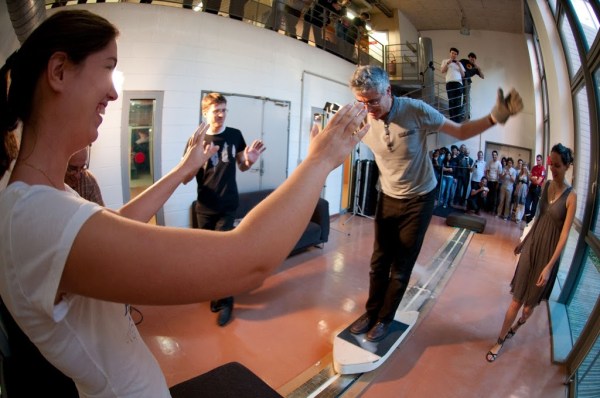Easy access to reliable electrical power is something a lot of us take for granted, but in developing countries or after natural disaster, it can be a rare commodity. [Daniel Connelly] has been working hard to develop infrastructure people can build themselves, and his latest project is a 200 W water turbine (video after the break) that can be built for about $50.
The core of the system is a wheel and motor from a hoverboard. What looks like 110 mm PVC tubing is connected together in a U-shape that can be mounted over the wall of a man-made channel. The inlet side is shorter than the outlet, and the system must be filled with water to allow the flow to start, like a siphon. The first two versions had the impeller sitting on the end of the outlet tube. V1 used a scrap plastic radial impeller of unknown origin, and did not work at all. V2 had a 3D printed impeller that worked pretty well, but the rotation speed wasn’t high enough to produce the voltage that [Daniel] wanted.
V3 used a large computer fan that was mounted in the short horizontal piece of section of tubing at the top of the system. It worked spectacularly well, producing about 55 V AC over a single phase of the motor, which should hopefully end up producing about 90 V DC and 200-500 W after rectifying the 3-phase motor output. This only however indicative, we would really like to see it tested with different loads connected. The output will also be dependent on the flow rate and head pressure of a particular stream/channel/river, and [Daniel] admits that they had pretty much ideal conditions for their tests. If hoverboard motors are hard to come by, a motorcycle alternator should also work well.
[Daniel] is still working out the kinks of the system, but as with his other designs on OpenSourceLowTech he will release the full open source design and tutorials as soon as he is ready. We are looking forward to seeing the system implemented out in the wild. For off-grid power, home built and 3D printed wind generators are another popular topic around here, if you don’t have a handy channel nearby.
Continue reading “Open Source $50 Water Turbine From Repurposed Parts”
















